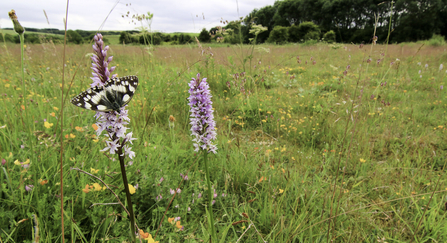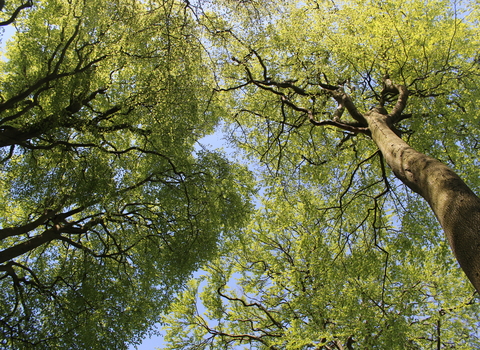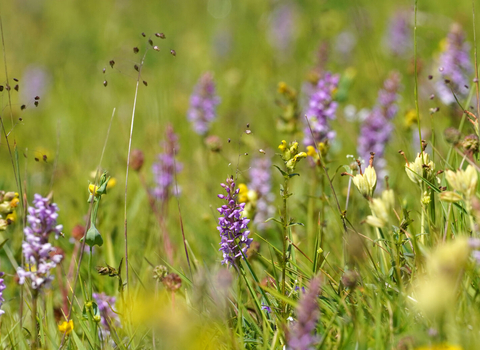What's the problem?
By law, most new developments in England must leave nature in a better state than before, by improving or creating new habitats. This process is called Biodiversity Net Gain or BNG.
Biodiversity Net Gain is about making sure developers avoid harm to important wildlife habitats, make up for unavoidable losses and go further and give back to nature. Done well, it protects wildlife and supports nature recovery.
But that’s being put at risk by new proposals from UK Government which would mean the vast majority of new developments will be exempt from this process. That’s bad for wildlife, and also bad for people.
An update on the Biodiversity Net Gain (BNG) Government Consultations
The government consultations on two changes to how BNG operates in the UK closed on the 24th of July 2025. Below you can read our responses on the consultation on Biodiversity Net Gain for nationally significant infrastructure projects and the consultation on improving the implementation of Biodiversity Net Gain for minor, medium and brownfield development.

Marbled white butterfly on a common spotted orchid in a wildflower meadow © Tom Marshall
Biodiversity net gain for nationally significant infrastructure projects
This consultation focused on developing a ‘core’ approach when applying BNG to the planning process for Nationally Significant Infrastructure Projects, or NSIPs for short. An invitation to comment on the model text was opened on the 28th of May 2025 and closed on the 24th of July 2025.
The Environment Act 2021 provides for a statutory BNG requirement for NSIPs. However, this consultation sets out further detail on how the Government propose BNG will apply to NSIPs, providing more information for developers and decision makers on what will be expected on BNG going forward. This will only affect applications submitted after May 2026.
Improving the implementation of Biodiversity Net Gain for minor, medium and brownfield development
The Environment Act 2021 introduced a mandatory BNG requirement in England for most new developments under the Town and Country Planning Act 1990, requiring them to deliver a 10% increase in biodiversity. Following a two year transition period, BNG has been mandatory for most major developments from 12th February 2024, and for minor development (small sites) from 2nd April 2024.
In this consultation the Government set out changes it proposes to make to the BNG requirements in England for minor, medium and brownfield developments. These include changes to the BNG regulations, small sites metric (SSM) calculation and guidance, a way of calculating the BNG for a development, and the way BNG is implemented more widely.
You can make a difference
If these plans to weaken Biodiversity Net Gain go ahead, both nature and people will suffer. Building developments can have a huge impact on wildlife and if the requirement for Biodiversity Net Gain is lost nature will be squeezed into smaller and smaller pockets.
Wildflower meadows, wetlands and woodlands that would have been created will not exist. There will be less birdsong, fewer trees, less space for pollinators like bees... the list goes on.
Meanwhile, people will also lose out on the benefits that these spaces would have created.
The public consultation has now closed but the work doesn't stop here. Please keep spreading the message for us using our Campaigner Toolkit.
This isn't a question of nature or development. We can have both. But it has to be done right.
Learn more about Biodiversity Net Gain and why it’s important
It might sound a bit confusing but Biodiversity Net Gain is a really important process to protect wildlife and support nature recovery.
What is Biodiversity Net Gain?
Biodiversity Net Gain is a mandatory approach to planning development in England. It means developers must deliver a 10% gain in biodiversity as part of their plans. Developers must deliver a measurable improvement to nature by enhancing or creating new habitats including hedgerows or watercourses and ensure they're managed for at least 30 years.
How does Biodiversity Net Gain work?
Developers must follow a series of steps that seek to avoid and minimise impacts to biodiversity.
The first step is to avoid damage, and then look to enhance existing habitats on the site of their development. These can include things like green roofs, or street trees. They might need to undertake surveys or impact assessments, and then create a delivery plan.
If developers can’t deliver all of their biodiversity gain onsite, they can look to deliver it off-site through dedicated habitat banks. This can be sites such as wildflower meadows and woodlands that are created and managed for 30 years through funding from BNG.
What do the current plans to weaken Biodiversity Net Gain really mean?
Biodiversity Net Gain provides a way to measure nature improvements within the planning system. It means that developers can fund habitat creation and that landowners, including farmers, can be rewarded for restoring nature.
Building developments can have a huge impact on wildlife and it’s only right that nature is not a victim. We support the principle that developers should make up for unavoidable loss by increasing natural habitats on-site or nearby.
Done well, Biodiversity Net Gain can help development to protect these valued spaces in the first place, or to create and enhance places, for wildlife and for communities nearby.
The proposal to change this fails to recognise the magnitude of the nature crisis – it will increase nature losses and cut wider public benefits in order to maximise profit for a few. Additionally, the changes are unlikely to speed up development as it doesn’t address the root causes of delays.
Are the plans all bad?
It isn’t all bad news.
In the current system, some nature recovery projects - like the creation of ponds and wetlands - have to go through the same planning process. That means the also need to deliver Biodiversity Net Gain. This extra legal requirement can sometimes mean these projects become unviable, so no benefits to wildlife are delivered.
We welcome this exemption, however, we cannot ignore the clear problems with other proposals.
Why do The Wildlife Trusts object to the small sites exemption?
Firstly, size doesn't always show how important an area is for wildlife. Even small building projects can cause big problems for nearby natural areas or break up the connections between different wildlife habitats.
Small losses add up over time. When many small areas are damaged or destroyed, together they create an even bigger problem than each one alone. In short – small developments can have big environmental impacts, and exempting more projects from BNG requirements could cause serious harm to both wildlife and people.

Credit: Lianne De Mello
You can help us stand up for nature
Please keep spreading the message for us using our Campaigner Toolkit.
This isn't a question of nature or development. We can have both. But it has to be done right.

